- Home
- >
- Preservation Archaeology Blog
- >
- Protection for Los Gigantes
May 19, 2015—Archaeology Southwest is very pleased to announce that we’ve recently purchased the Los Gigantes archaeological site from the ranching family in the El Morro Valley of west-central New Mexico who has protected it for generations. This ancestral Zuni site is one of the most important precontact (before the arrival of Europeans) communities in the region. The place is also of personal importance to me, because it was the first site in the Zuni/Cibola region of New Mexico where I worked, as part of an Arizona State University project headed by Keith Kintigh and Greg Schachner in 2004. I fell in love with the Zuni region on that project, and much of my research since has focused on the area.
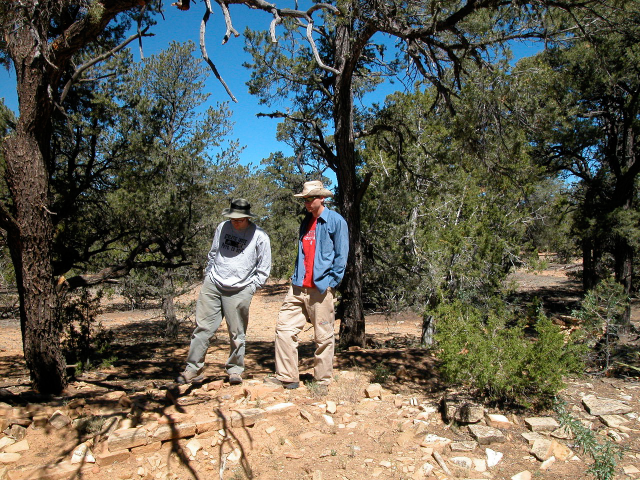
So, what makes the Los Gigantes community so special? Anyone who has followed this blog for very long or who has an interest in ancient life in the Southwest probably has some familiarity with Chaco Canyon and the architectural marvels found there. Especially between about A.D. 1000 and 1150, Chaco Canyon was the center of a major social and political development that spread across much of the northern Southwest. In Chaco Canyon itself, people built massive multistory structures that resembled typical houses, but on a far grander scale.
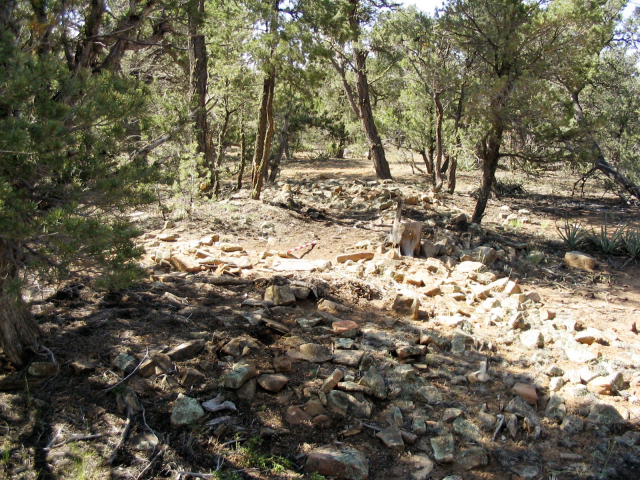
These structures—which archaeologists call “great houses”—had massive, over-built walls of finely shaped stone and higher-than-necessary ceilings supported by huge, precisely cut wooden beams. Earthen berms and other landscape modifications heightened the dramatic sense of scale and prominence. Great houses were also often associated with great kivas, massive circular constructions that were probably central to public and religious life for people in the canyon.
In the 1000s and early 1100s, Chaco Canyon was also linked to more than 200 great house communities and even more great kivas spread across the northern Southwest, south to just below the edge of the Colorado Plateau and north to the foothills of the San Juan Mountains near Mesa Verde. In many cases, these Chacoan outliers, as they are sometimes called, were local community centers for more than a century. Most seem to have fallen out of use when such constructions also declined in Chaco Canyon itself in the mid-1100s (but see information on Salmon and Aztec Pueblos to learn more about what happened next in the north).
In a few portions of the northern Southwest, including the Zuni/El Morro area, Chacoan developments had somewhat of a revival a bit later in time. Archaeologists refer to structures that had features harkening back to Chaco-era architecture but dating decades or even a century after people were no longer building such structures in Chaco Canyon as Post-Chacoan great houses. (How do we know they dated later? Dendrochronology—tree-ring dating of architectural wood in these structures.) Like their earlier Chacoan counterparts, Post-Chacoan great houses had massive walls and were over-built, compared to typical houses. Many of these Post-Chacoan structures also had a decidedly local flavor, incorporating innovations to the form of Chacoan architecture.
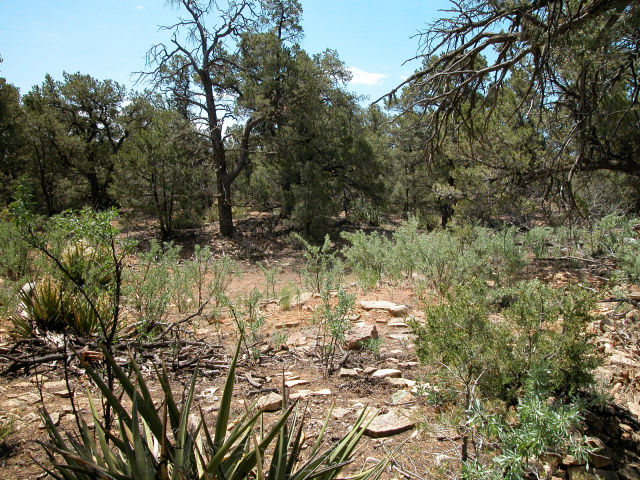
Los Gigantes is one of the best examples of a Post-Chacoan great house community. The site includes a single-story great house with high walls and well-shaped masonry construction dating from about A.D. 1250–1275, along with a number of smaller houses surrounding the great house. The site also includes a huge great kiva that is more than 30 meters (almost 100 feet) in diameter—bigger than any great kiva in Chaco Canyon! Unlike the earlier Chacoan great kivas, however, this structure never had a roof. Thus, though this structure, with its antechamber area and encircling bench, certainly evoked images of earlier Chacoan great kivas, it was also something new. This unroofed structure could have easily accommodated huge crowds—larger than the population of the Los Gigantes community itself—and it probably housed large gatherings of villagers from multiple communities.
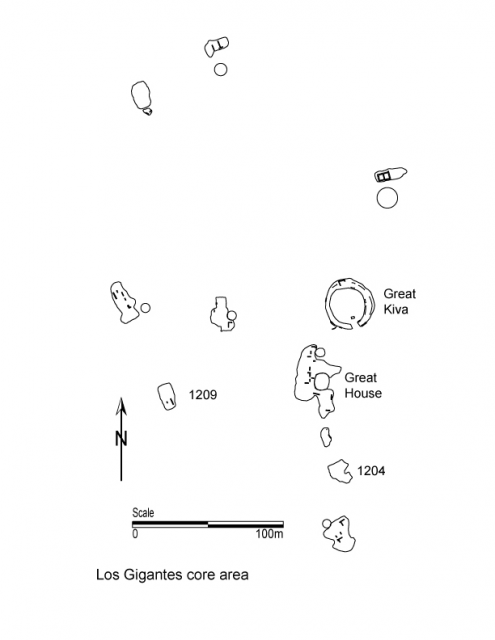
The return to Chacoan-inspired architecture and symbolism well after such construction ceased in Chaco Canyon is interesting. The impulse to revitalize practices and styles associated with powerful developments in the past for local purposes has been characterized as “gimme that old-time religion” by Kathy Schrieber (quoted by Kintigh 1994). The Los Gigantes site is one of the best-preserved examples of this particular period and Post-Chacoan developments in general.
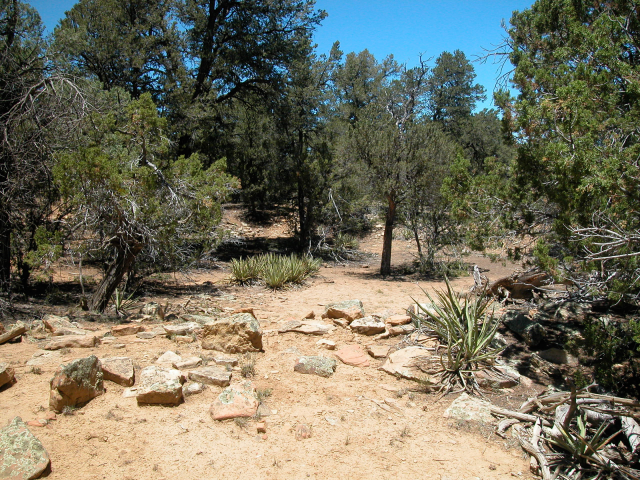
Significantly, Los Gigantes is also an important ancestral Zuni settlement with connections to contemporary people at Zuni Pueblo about 20 miles to the west. Indeed, the area around Los Gigantes is specifically named in Zuni migration narratives (Ferguson and Hart 1985). We are honored to be able to ensure the long-term protection of this scientifically and culturally important ancient community, which is the second major settlement we’ve preserved in the El Morro Valley (the other being Spier 142).
References Cited:
Ferguson, T.J. and E. Richard Hart
1985 A Zuni Atlas. University of Oklahoma Press, Norman, OK.
Kintigh, Keith W.
1994 Chaco, Community Architecture, and Cibolan Aggregation. In The Ancient Southwestern Community: Models for the Study of Prehistoric Social Organization, edited by W.H. Wills and R.D. Leonard, pp. 131–140. University of New Mexico Press, Albuquerque.